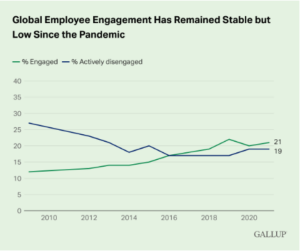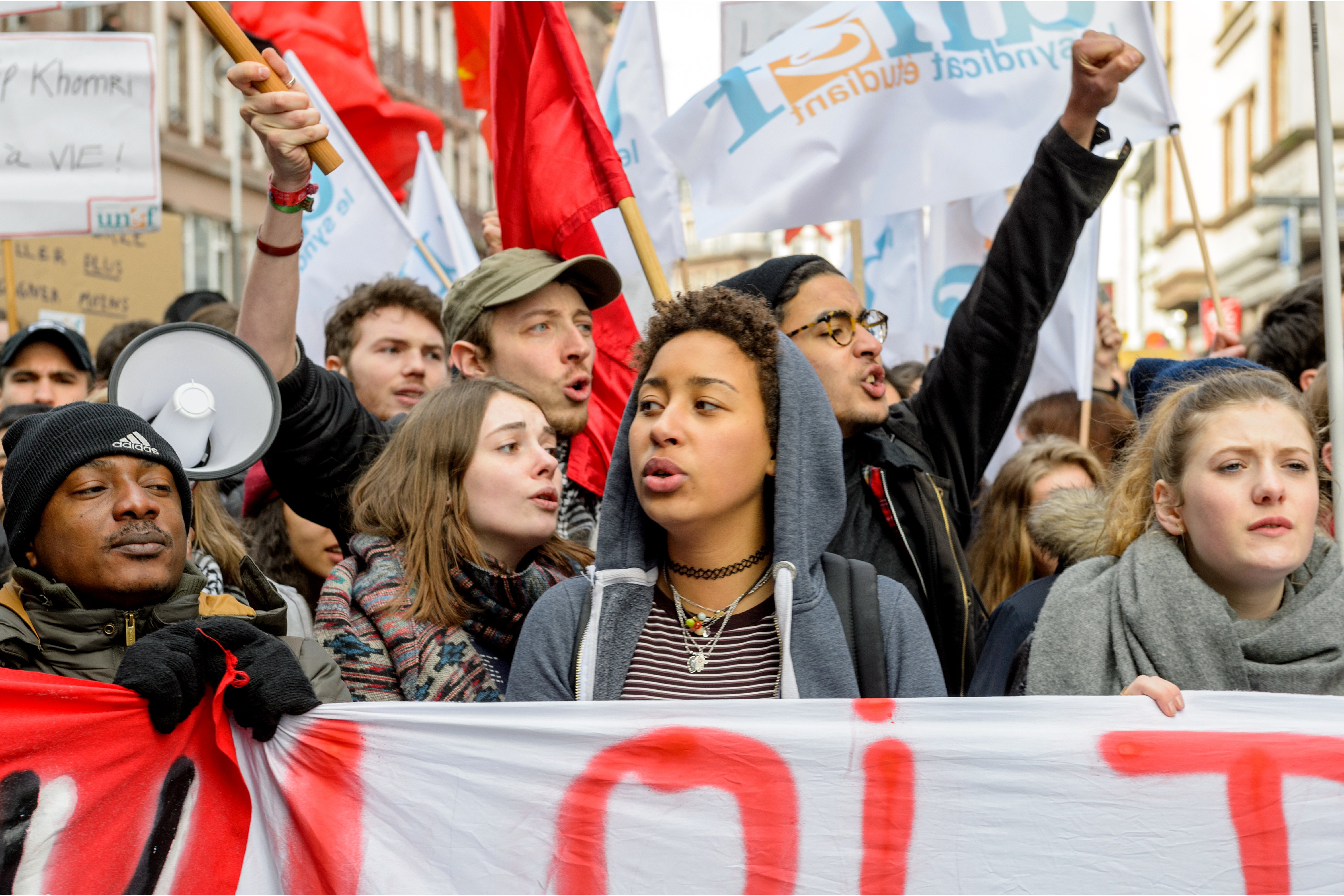Assessing organizational threats and risks from labor and social unrest around the globe.
In recent years, the world has witnessed a surge in social unrest, as people take to the streets to voice their grievances and demand change against economic inequality, racial injustice and environmental concerns.
Beyond the immediate social and political implications, there is growing evidence to suggest that this surge in social unrest poses a significant risk to the global economy’s recovery, potentially leaving a lasting impact on economic performance.

Source: International Monetary Fund, 2023
A study conducted by Economist Intelligence Unit, the research and analysis division of the Economist Group, found that businesses in countries with higher levels of social unrest experienced an increase in operational costs due to higher security measures and insurance premiums. These additional expenses not only strain company budgets but can also deter investment and job creation, further impeding economic recovery.
While social unrest can serve as a catalyst for change and address systemic issues, its impact on the global economy’s recovery cannot be overlooked. As governments and policymakers grapple with finding sustainable solutions to address social grievances, it is imperative to strike a balance between fostering inclusive growth and maintaining economic stability.
Experts warn that the effects of social unrest on the global economy are not limited to specific regions but can have spill-over effects. A report from the World Economic Forum emphasizes the need for coordinated efforts among governments, businesses, and civil society to address the underlying causes of social unrest and mitigate its economic consequences.
Understanding the Interconnected Risks
Like a massive web reaching all corners of the globe, the one-two punch of labor and social unrest has the capacity to arrest forward momentum across multiple sectors and industries. To gauge the risks posed by global unrest, it is critical to understand the drivers and associated risks behind each disruption.
The Ukraine-Russia conflict, for instance, cast a shadow of uncertainty, with concerns shifting to other potential conflict zones such as North Korea, the Taiwan Strait, and border disputes between India and China. The looming threat of military conflicts further fuels caution and apprehension, impacting global trade and investment.
In Political Conflict and Investor Sentiment Around the World: Russia-Ukraine One Year On, published by the Australian Institute of International Affairs in March 2023, authors Dr. Eliza Wu and Dr. Angel Zhong say that understanding investor sentiment since the outbreak of the Russia-Ukraine war is crucial to comprehending the fluctuations in financial markets.
“The Russia-Ukraine conflict brought an immediate end to the era of ultra-low interest rates and triggered steep hikes in energy prices,” write the authors, who note, “governments and central banks have been compelled to pivot urgently towards fiscal and monetary policies that focus on tax adjustments and interest rate hikes that combat inflation.
Although bearish investor sentiment is palpable across the world’s equity markets—particularly in developing nations and the U.S.—the conflict has the ability to impact the wallets of consumers on the other side of the globe.
According to Bloomberg, “Workers are feeling the impact of higher fuel and food prices in the wake of Russia’s invasion of Ukraine while wages remained stagnant. That’s emboldening employees to demand more from their bosses.”
Which brings us to a notable trend in the Western world, particularly in the U.S.: soaring worker apathy.
“Employee engagement had been growing for a decade,” said Jim Harter, chief scientist for Gallup’s workplace management practice. “It’s now lower (32% in 2022) than it has been since 2013, including during the height of the pandemic and the racial unrest following the murder of George Floyd by the police.”

Source: Gallup, 2023
According to Bloomberg’s supply chain expert Brendan Murray, the catalyst driving engagement and worker productivity over a proverbial cliff can be traced back to attitudes of those who have reached a breaking point after three years of operating in a heightened emotional state.
“From the railways of North America to truckers in Peru, workers toiled through the pandemic to keep goods moving around, shielding supply chains from an even steeper collapse,” writes Murray. “Now they’ve had enough of watching livelihoods get eroded by soaring inflation while employers rake in profits. Their newfound militancy has gotten central bankers worrying about a 1970s-style wage-price spiral.”
In a March 2023 piece entitled, “Women’s Return to the Workforce Piles Momentum on a Hot Economy,” the Wall Street Journal proclaimed that American women could be the savior the labor market desperately needed. According to the assessment, women returning to the workforce would propel the economy in the face of high inflation and rising interest rates.
However, further in the piece, The Journal undermines its own argument, citing that “Childcare remains out of reach for many families due to the high cost and a dearth of open spots in some places. In early February [2023], nearly five million women weren’t working because they were caring for children who weren’t in daycare or school, according to the Census Bureau.”
“Women are a hugely important group for propelling that labor supply and helping perhaps take a little bit of the heat off of inflation,” said Sarah House, senior economist at Wells Fargo Bank, speaking in The Journal.
To address the issue, the U.S. Department of Commerce announced in February 2023 that companies seeking $150 million or more under the CHIPS and Science Act must guarantee high-quality childcare for workers.
While organizations such as the National Women’s Law Center celebrated the news, others such as The New York Times’ Ezra Klein, author of Why We’re Polarized, argued it was a distraction from the real goal of the CHIPS Act.
“The Department of Commerce defended this built-in childcare requirement, arguing it was essential to grow the supply of workers available to new factories [for semi-conductor development],” writes Klein.
The interconnectedness of these three seemingly disparate disruptions—a war in Europe generating consumer pricing instability, thereby fueling frustration at low wages in the West, which in turn prevent women from returning to the office—is an example of the complexity behind the issue of labor and social unrest: there is no one culprit and no singular solution.
Deescalating Tensions (Before They Start)
Although private and public enterprises globally do not possess a magic bullet to solve societal woes, companies and leaders have the capacity to not only de-escalate tensions amongst members of their organizations, but in turn, strengthen their foundation, brand, and corporate reputations.
How? In an era of heightened social consciousness, consumers and stakeholders expect companies to demonstrate ethical practices and social responsibility. Instances of labor disputes, allegations of worker mistreatment, or environmental violations can quickly tarnish a company’s image, leading to customer boycotts, investor skepticism, and long-term reputational damage.
According to Bernd Schmitt, executive director of Columbia University’s Center on Global Brand Leadership, when such a scandal affects an entire corporation, “the company should set up communications that focus on its core values, such as innovation or leadership, rather than hawking products,” he says, in Knowledge at Warton.
Moreover, a survey by Nielsen indicated that 73% of consumers globally are willing to pay more for sustainable products, highlighting the importance of maintaining a positive brand perception.
Regardless of external pressures, leaders should establish a culture of open communication, where employees feel encouraged and safe to express their concerns. This can be achieved by creating channels for feedback, such as suggestion boxes, regular feedback sessions, or digital platforms for anonymous submissions. By providing avenues for employees to voice their perspectives, leaders demonstrate their commitment to listening and understanding their concerns.
“By promoting an environment that welcomes diverse perspectives, [leaders] can facilitate the exchange of ideas necessary for innovation and growth,” writes Forbes Council Member, Emmanuel Ramos.
Additionally, chief executives should engage in transparent and authentic communication with all stakeholders, including employees, customers, investors, and communities, Ramos suggests. Regularly report on progress made toward sustainability goals, social impact initiatives, and efforts to address labor concerns. Such transparency can enhance trust, manage expectations, and align stakeholder interests.
Stand For Those You Lead
When unrest is caused by a lack of alignment between industry leaders and the general public, consider collaborating with industry associations, policymakers, and civil society organizations to influence positive change in labor and social policies.
Salesforce—the cloud computing company which has made a reputation for itself by creating a diverse and inclusive work environment—prioritizes equal pay and implements policies to prevent discrimination and support underrepresented groups; thereby proactively addressing many of the social triggers exerted on employees today.
Salesforce also launched the “Philanthropy Cloud” platform, which enables employees to engage in volunteer work and support various social impact initiatives. Additionally, The Business Roundtable, an association of CEOs from leading U.S. companies, has issued statements supporting inclusive corporate governance and responsible business practices.
By taking these proactive actions, CEOs can demonstrate their commitment to addressing labor and social unrest issues while driving sustainable growth. By prioritizing employee well-being, stakeholder engagement, responsible business practices, and societal impact, CEOs can navigate the challenges of the current landscape and position their organizations for long-term success.
While the road ahead may be uncertain, there remains hope that collective efforts, open dialogue, and a commitment to fairness and resilience can lead to a world where labor, social, and political unrest gradually give way to greater stability, opportunity, and shared prosperity.






